Last Dunes Standing in Antioch
Right in Your Own Backyard, Last Dunes Standing in Antioch
There is so much to do in and around Pittsburg, California. As a resident the Delta Hawaii in Pittsburg, you have easy access to things to do. Entertainment, restaurants, shopping, marinas, and more. Delta Hawaii enjoys unrivaled popularity with active adults. You’ll also find the unexpected right in your own backyard, for instance, the Antioch Dunes.
Last Dunes Standing
Antioch Dunes National Wildlife Refuge is the only national wildlife refuge in the country established to protect endangered plants and insects like The Antioch Dunes Evening Primrose, the Contra Costa Wallflower, and the Lange’s Metalmark butterfly. Antioch Dunes Refuge supports the last known populations of these wonders.
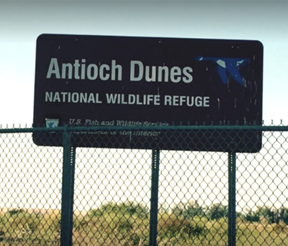
This is extraordinary considering the expansion by development and industry surrounding the area. The 55-acre refuge was created in 1980. It was once part of a larger sand dune system, one that stretched two miles along the southern bank of the San Joaquin River east of the City of Antioch, California.
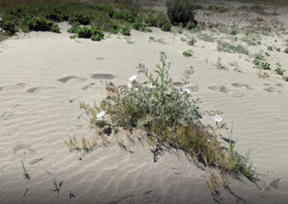
The dunes were formed by ancient deposits of glacial sands carried downriver from the Sierra Nevada. Over thousands of years, ocean winds and bay tides slowly shaped these wind-blown sands into dunes. Large-scale sand mining and industrial development fragmented the sand dune habitat until only a small portion of the original ecosystem remained. What is left today are two disjunction parcels containing sand dunes of many sizes, some up to 50 feet high!
The Only Place in the World
Isolation has resulted in the development of plants and insects species that are found nowhere else in the world. Due to the sensitivity of the habitats and the endangered species, the refuge is not open to unsupervised use by the public. However, refuge staff and local educators conduct on-site environmental education. These education efforts are usually in the form of guided tours on a monthly basis. Volunteers also regularly assist refuge staff with habitat restoration projects and endangered species surveys.
Management of the habitat is extremely labor intensive. In areas where sand was mined down to the clay substrate, the refuge has imported and reconstructed sand dunes. Seeds collected from the plants are grown in a nursery for replanting on the refuge.
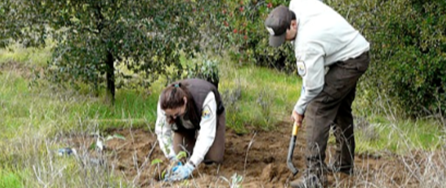
A combination of prescribed burning, mowing, dune reconstruction, hand-weeding, and herbicides are being employed to remove exotic vegetation and improve the substrate for native seedling establishment.
Surveys of all three species, plus other species of special concern, are conducted annually. Applied management research is being conducted in order to develop a comprehensive plan for managing sand dune habitat on the refuge over time.
Management Activities
To help plants and wildlife, the staff applies a variety of habitat management techniques to maintain, recover or enhance plant and wildlife values. Current management actions include:
- An annual survey of the Lange’s endangered species.
- Captive breeding programs.
- Native weed control via hand weeding, and prescribed burning.
- Sand importation to create new sand dunes.
- Revegetation with endangered and a variety of native dune plants.
- Firebreaks to prevent spread of wildfires caused by trespassers.
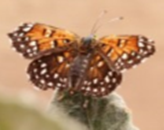
The Lange’s Metalmark Butterfly
(Apodemia mormo langei) was first discovered in 1933. In June 1976, this local subspecies was one of the first eight insects to be listed as endangered under the Endangered Species Act of 1973.
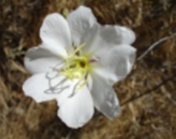
The Antioch Dunes Evening Primrose
(Oenothera deltoides spp. howellii) was federally listed as endangered in 1978. Its naturally occurring population is confined to the two disjunct units of the refuge.
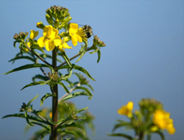
The Contra Costa Wallflower
(Erysimum capitatum spp. angustatum) is in the same family as the mustard family. The Wallflower has been listed as endangered since 1978. The entire known wild population of the Wallflower consists at the refuge.
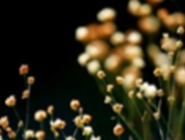
Naked-Stemmed Buckwheat
(Eriogonum nudum var. auriculatum) is so named because it has very few leaves along its bare stems. This species, is the only plant that the Lange’s Metalmark butterfly will lay its eggs on. It is also food for the Lange’s Metalmark butterfly larvae.
The Antioch Dunes National Wildlife Refuge is a must-see experience when you consider how fragile these endangered species are.
All you need is the right lifestyle.
The Delta Hawaii 55+ lifestyle experience is worry-free, with all community grounds keeping taken care of, allowing you more time to enjoy life as it was meant to be, and get to experience places like the Antioch Dunes and so much more. You can enjoy a life at Delta Hawaii now.
It’s easy to see why 55+ living at Delta Hawaii, Pittsburg, California offers such unrivaled popularity with active adults. Very best lifestyle at the very best value!
Contact us today and we will help you consider the options. Call to discuss a visit with one of our friendly and dedicated staff members.


